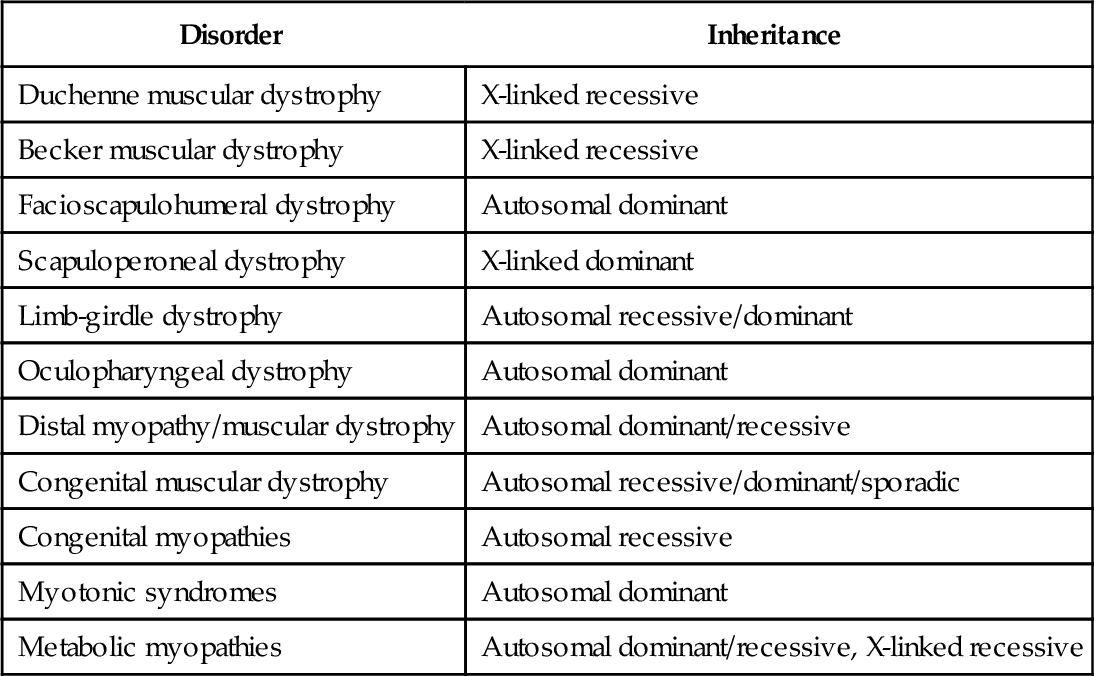CHAPTER 135
Myopathies
Definition
Myopathy is the common name for diseases derived from the muscle. Myopathies have different causes and different courses, that is, they may have acute, subacute, or chronic presentations (Table 135.1). Myopathies affect proximal or distal muscle groups; some of them also affect heart muscle, leading to cardiomyopathy [1]. Many myopathies are inherited disorders (Table 135.2); in an increasing number of disorders, the genetic background and the abnormal or missing muscle protein have been revealed during the last decade. An updated gene table is published online [2]. There is also a gene table updated for 2012 and published in Neuromuscular Disorders [3]. Muscle diseases are rare, with a prevalence of approximately 50 per 100,000. Myopathy is more common in females than in males, although Duchenne muscular dystrophy is found only in males because of an X-linked inheritance.
Muscular Dystrophies
Muscular dystrophies are inherited disorders of muscle due to abnormal structural muscle proteins, for example, dystrophin in Duchenne muscular dystrophy and sarcoglycans, calpain, and dysferlin in different limb-girdle dystrophies [2,3]. They are characterized by progressive course and early onset.
Congenital Myopathies
Congenital myopathies form a clinically heterogeneous group characterized by findings on muscle biopsy. They are slowly progressive or nonprogressive and usually are manifested in the neonatal period.
Metabolic Myopathies Including Mitochondrial Myopathies
Metabolic myopathies form a clinically heterogeneous group of muscle disorders resulting from inherited defects in intracellular energy production. They may be manifested as cramps and myoglobinuria. Patients with cramps and myoglobinuria often have disorders in the glycogen or lipid metabolism pathways. They may be asymptomatic at rest, but symptoms develop after exercise. Mitochondrial myopathies may be a part of a neurologic syndrome often involving the central nervous system.
Inflammatory Myopathies
Inflammatory myopathies are characterized by inflammatory changes in the muscle and are associated with infections or an immunologic process. They are divided into polymyositis, dermatomyositis, and inclusion body myositis [4]. The course is acute or subacute and is almost always associated with an elevated serum creatine kinase (CK) level.








